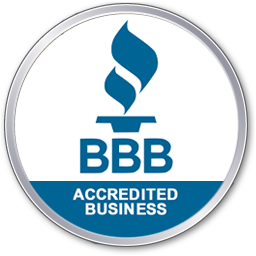Executive Summary
- A brownfield is a piece of land that is either abandoned or unused because of environmental contamination concerns.
- Redeveloping a brownfield offers benefits like increased property values, enhanced environmental health, and job creation, but contaminant remediation and mitigation are often necessary for redevelopment.
- Any brownfield redevelopment project should carefully follow local regulations and consider the input of the local government and community.
- From providing an environmental site assessment to contamination remediation strategies, a professional environmental service can address contaminants and ensure the site is fit for redevelopment.
Often vacant plots are a source of untapped potential, but development can be complicated if there are environmental concerns. Brownfields, or abandoned land with suspected contamination, can provide the opportunity for new developments as long as the proper steps are taken to ensure the health of the environment and the surrounding community.
Redeveloping brownfields requires a detailed process that involves assessing the site for contaminants and removing any pollutants from the property. At Alpha Environmental, we can support you in brownfield redevelopment, from assessing risks to addressing the presence of pollution and contaminants.
What Is a Brownfield?
A brownfield is a piece of land that is either abandoned or underutilized in large part due to concerns about environmental contamination. Brownfields can be the source of either verified or suspected environmental contamination.
The government considers a brownfield “abandoned, idled, or underused industrial and commercial properties where expansion or redevelopment is complicated by real or perceived environmental contamination.”
Brownfields can have varying levels of environmental contamination, as some sites have been used for industrial purposes with extensive contaminants, while others may have been used for commercial purposes with little environmental concern.
Some examples of brownfields can include:
- Former manufacturing plants
- Old gas stations
- Abandoned railroads
- Vehicle or machinery repair sites
- Parking lots
A brownfield can take many forms, so these sites have vast potential if the proper steps are taken to identify and address environmental contamination so that it is safe for redevelopment.
The Importance of an Initial Assessment and Site Characterization
An important factor in the definition of brownfields is that they have “real” or “perceived” contamination, meaning that these sites may not necessarily be contaminated. Therefore, it’s essential to identify the actual level of contamination at a given site.
A Phase I Environmental Site Assessment (ESA) can identify any environmental risks on a site of land by researching the current and historical uses of the site. A Phase I ESA involves:
- A review of maps and historical records
- A review of government databases
- Interviews of previous owners and neighbors
- A visual inspection of the property
This assessment will reveal whether there is known or potential contamination on the property, sometimes called recognized environmental conditions (RECs). These results will allow you to determine whether the land is fit for redevelopment or whether more action is needed to address the contamination.
In many cases, an ESA is required by lenders before the sale of a property takes place.
It’s important to receive an ESA from an experienced professional in order to ensure accuracy and reduce any risk of subjectivity in the results.
Brownfield Mitigation and Remediation Strategies
If a Phase I ESA verifies potential contamination of a brownfield, then you must begin taking steps for mitigation and remediation. Typically, the next step is a Phase II ESA, which will further assess the scope of the contamination and what measures may be necessary to address it.
A Phase II assessment will:
- Identify potential chemicals of concern
- Conduct groundwater sampling
- Perform soil sampling
- Determine the extent of the contamination
- Identify contamination hotspots
- Develop further plans to remove contamination
With more information about the contamination, you can begin to take action. The mitigation strategies necessary for a brownfield depend on the type of contamination present. The most common hazards in brownfields include contamination of soil, groundwater, and vacant structures on the property.
Some methods that may be necessary for brownfield remediation include:
- Soil remediation – In the event of lead or other chemical contamination, soil remediation helps bring contaminants down to a safe level.
- Groundwater treatment – If groundwater contamination is found, then treatment can help mitigate concerns and restore the health of the property.
- UST removal – Heating oil tanks and underground storage tanks (USTs) can be a source of contamination and an obstacle to redevelopment, making UST removal necessary.
- Removal of structures – Structures on the property may also contain pollutants and pose hazards, so clearing old structures can prepare the site for redevelopment.
Consulting environmental professionals can help you determine what procedures may be necessary and help carry out the service.
Regulatory Considerations and Approvals
The risk of environmental contamination is always an important factor in development, and especially so with brownfields. Therefore, to protect the health and safety of anyone who visits the site or the surrounding area, there are several considerations to make.
The Environmental Protection Agency (EPA) offers recommendations for brownfield redevelopment federally through its Brownfields Program. In Oregon, the Department of Environmental Quality oversees brownfield redevelopment and regulation.
Although there are no definitive legal requirements surrounding brownfield development, both bodies advocate for brownfield development and suggest environmental site assessments before rebuilding on the land.
All assessments must follow ASTM International and EPA standards. If a site is determined to have environmental contaminants, developers do have a legal responsibility to clean up the property and address the concerns to protect the surrounding community.
Once contaminants are completely addressed, the DEQ will provide a letter of “No Further Action,” indicating that it is safe to continue developing.
Levels for contamination may differ depending on local regulations and the intended use of the land, referred to as risk-based clean-up. For example, developing a brownfield for a new local park may offer more risk for exposure to contaminants than a new commercial property and require stricter criteria before approving development.
Each state has its own regulations for brownfields and criteria for what levels of contamination are deemed acceptable or require action. If you are unsure of your state or local regulations, consider consulting a local government official or an expert service.
Choosing a professional service for ESAs and redevelopment is the best way to stay in line with regulations, as they will have the necessary certifications, extensive expertise, and a complete understanding of local laws and regulations.
Sustainable Design and Community Engagement
An integral part of brownfield redevelopment is considering the well-being of the surrounding community. Brownfields can be even more beneficial for the community when they incorporate sustainable design and involve local stakeholders.
Brownfield redevelopment is a sustainable practice in itself, as repurposing old land allows new, helpful projects to be put in place, as opposed to digging up new land. Ways to incorporate sustainable design into a brownfield include:
- Incorporating green spaces and vegetation
- Choosing environmentally conscious landscape design
- Constructing green buildings and structures
- Including renewable energy systems
Meanwhile, community engagement and the involvement of stakeholders ensure that others are satisfied with the use of the land and minimize concerns about development. Community input can be gathered through public hearings and surveys to ensure that the redevelopment is beneficial for all involved.
Financing and Funding Strategies
Developing a brownfield properly while mitigating any environmental concerns offers several benefits for nearby residents, businesses, and the neighborhood as a whole.
A business or new development taking the place of a brownfield offers a better alternative to the vacant land, as it increases property values, creates jobs, and provides a potential economic boost.
Because of the benefits of transforming a brownfield, local governments will sometimes also provide incentives for developers through tax incentives, grants, and other methods. For example, the EPA offers a Brownfield Grant, and the City of Portland offers two grant options.
Altogether, the most common financing and funding strategies for brownfields include:
- Public or private grants
- Tax incentives
- Public-private partnerships
Brownfield Transformation and Revitalization
Although the process can take extensive work, there are many success stories of brownfield transformation, resulting in exciting benefits for businesses, visitors, and members of the surrounding areas.
One such example took place in Hillsboro, Oregon, on a property alongside the Tualatin River. The waterside property was formerly used for agricultural, industrial, and residential purposes, resulting in various potential contaminants. However, after a lengthy and strategic redevelopment process, the site is now a safe recreational park and boat launch area featuring trails and natural plant life.
This project was funded by an EPA Brownfield Grant given to the regional government of greater Portland. The revitalization project started with a Phase I ESA that met EPA and ASTM International standards. Then, it included cleanup of the existing structures, a leaking underground storage tank removal, and replacing contaminated.
Many abandoned brownfields offer potential for redevelopment and can be turned into properties that serve plenty of public good. Taking the proper steps to safely redevelop brownfields can bring rewarding results with positive outcomes for a wide range of stakeholders.
Build a Blueprint for Brownfield Redevelopment
Brownfield redevelopment offers vast potential for the owners and the surrounding community. Still, it takes proper due diligence to ensure the property is safe and free from harmful environmental contaminants.
At Alpha Environmental, we have the tools, experience, and resources to assess and restore the environmental health of a brownfield while making it safe and within regulation for redevelopment. From performing environmental site assessments to complete brownfield redevelopment services, we offer a range of services to help you prepare for developing and redeveloping land.
Contact Alpha Environmental today to learn more about brownfield redevelopment, schedule a free estimate, and receive the support you need to ensure a responsible process.




